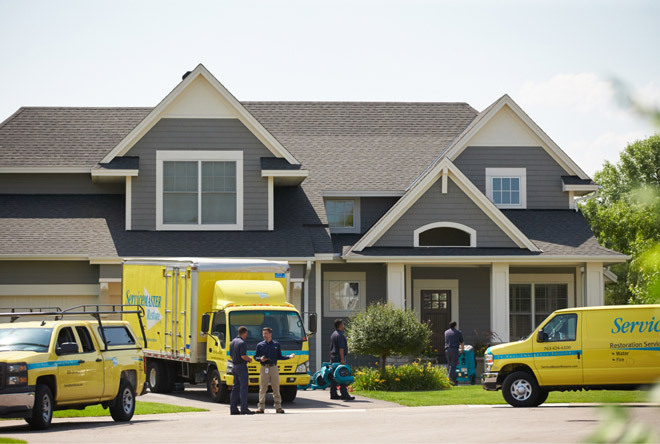As the barrier between your floor and the wall, baseboards take a lot of the brunt when it comes to wear and tear. At Service Master Recovery Services, we want you to inform you about the hidden signs of water damage and what you should look out for.
Sometimes water damage is obvious, showing itself in water marks or stains after a major leak. Other times it can sneak up on you… a crack, bubbling, swelling, or peeling on your baseboard that slowly develops over time. These area all classic signs of water damage below the surface or in many cases behind your walls.
So what can you do when baseboard swelling takes you by surprise and there are no other signs of a leak? At Service Master, we’ve got all the tips of the trade for you to keep your house in peak condition even when water damage happens by identifying damage, and repairing or replacing your baseboards.
Signs of Damage
Often when you have a leak, you know it right away from the big mess it makes. But one of the biggest giveaways of water damage Los Angeles in less obvious cases is baseboard swelling. This is often the first clue to a larger water-catastrophe.
If there have not been any major leaks in your home, the next most likely answer is a leak in the walls. Problematic pipes leak inside your home, building up moisture where you can’t see it. That moisture pools over time, hurting the drywall, particularly on the ground where the baseboards are. Thus… baseboard swelling.
Solutions
But not to worry, once the leak is discovered, swelling baseboards and water damage can be fixed and prevented for the future. Depending on the severity of your situation, you have a couple options.
Repair
If the water damage is discovered early enough on, it is possible to salvage your baseboards, repair, and reinstall them. This all depends on how much damage has been caused, and if the source of the leak has been fully fixed.
First of all, find that leak! The key to preventing future damage is figuring out what went wrong in the first place and fixing that. Then if the baseboards are still relatively flat, because water warps their shape, they can be repaired. The baseboards and the wall need to be completely dried out before reinstalling the base boards, swelling of the wall needs to have receded, peeled paint needs to be removed and reapplied, and in some cases sanding of the boards needs to be done to account for minor warping.
Replacement
This is the method we recommend most highly. Though repairing is resourceful and cheaper, it may not fix all the damage and cause you to need more repairs or replacement in the long run (which is often more money out of your pocket).
Many baseboards are made of layers of sawdust and resin (a perfect recipe for soaking up water from an unwanted leak). This is why we suggest solid wood baseboards, which are much more water resistant and long lasting.
Give us a call today if you think you may be experiencing some water damage.


